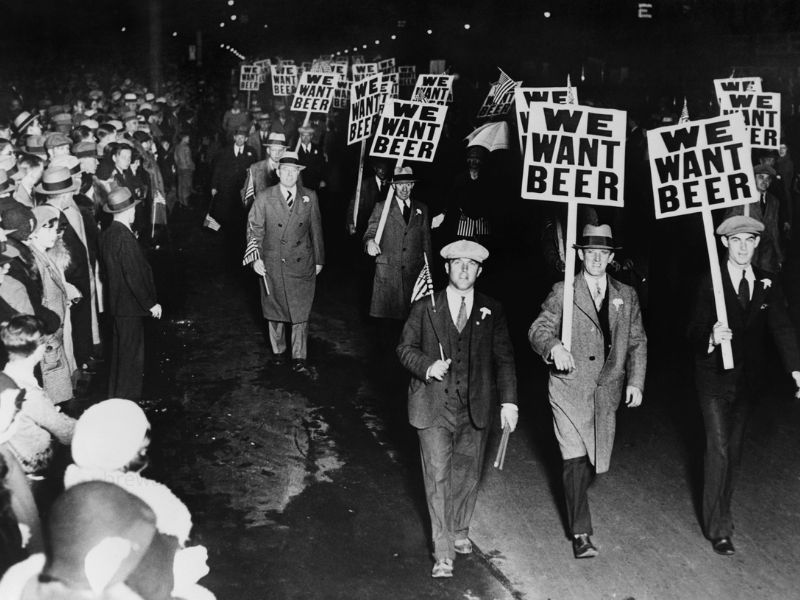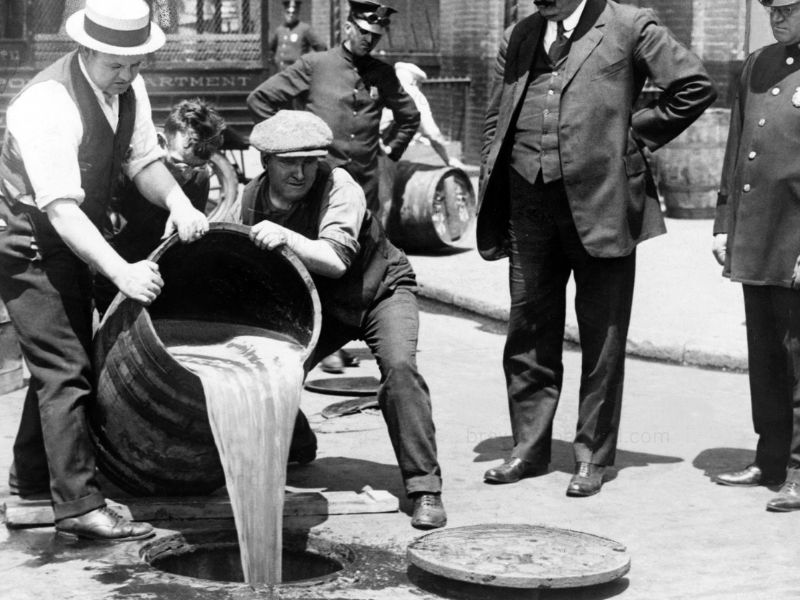Ah, Prohibition! The mere mention of this term often conjures up images of clandestine bars, jazz-filled nights, and smuggled liquor. For those deeply rooted in the love of homebrewing and craft beer, understanding Prohibition’s influence on the American beer industry is essential. It’s a pivotal moment in history that reshaped the way Americans approached and valued their beloved brew.
A Brief Glimpse into Prohibition’s Origins
Before diving deep into the effects, it’s vital to understand why Prohibition came into existence. Originating in the late 19th and early 20th century, the temperance movement sought to reduce the consumption of alcoholic beverages. It was driven by various religious groups, social activists, and others who believed that alcohol was the root of many societal problems, from domestic violence to economic downfall.
In 1920, the 18th Amendment to the U.S. Constitution, alongside the Volstead Act, made the production, sale, and transportation of alcoholic beverages illegal. The intention was noble: to foster a healthier, more moral society. However, as we’ll see, the outcomes were far from the ideal.
The Immediate Consequences for Breweries
Now, imagine being a thriving brewery in the early 20th century, with barrels ready to be shipped. Suddenly, the government says you can’t produce or sell beer. Devastating, right? That’s precisely what happened. Many breweries, distilleries, and bars were forced to shut down, leading to massive job losses.
A few clever breweries tried to circumvent the rules. They began producing “near beers,” which had less than 0.5% alcohol content, technically making them non-alcoholic. Brands like Bevo became popular, but they were a far cry from the real deal. Others shifted their focus to alternative products, like ice cream or malt syrup, which homebrew enthusiasts could use to brew their beer. But let’s be honest, it wasn’t the same as walking into a pub and grabbing a pint.
The Rise of Illicit Activities
You know what they say about the forbidden fruit, right? Prohibition made alcohol even more enticing. The demand for liquor didn’t wane; it just went underground. Speakeasies, hidden bars serving alcohol, mushroomed across cities. Gangsters like Al Capone made fortunes smuggling and distributing alcohol.
Interestingly, this period witnessed a shift in preferences. While beer was bulky and harder to transport covertly, spirits were more potent and compact. So, while many missed their lagers and ales, the consumption of spirits like whiskey surged.
Prohibition’s Impact on Quality
For the homebrewers and craft beer aficionados reading this, here’s a heart-wrenching fact: Prohibition severely impacted beer quality. With no regulations in the underground market, quality control was non-existent. Many consumed poorly brewed beer, sometimes hazardous, leading to health issues.
The End of Prohibition and the Resurgence of Beer
As the years rolled by, it became evident that Prohibition was doing more harm than good. The government was losing tax revenue, organized crime was rising, and the public was consuming unsafe alcohol. In 1933, the 21st Amendment repealed the 18th, ending Prohibition.
Breweries sprang back to life, but the landscape had changed. Many smaller breweries couldn’t compete and were either bought out or remained closed. This led to the dominance of a few major breweries, which shaped the American beer industry for decades.
The Silver Lining: Birth of Craft Beer Movement
But here’s the twist in our tale. While Prohibition had its dark days, it sowed the seeds for the craft beer movement. The homebrewing techniques developed during those dry years laid the foundation. In the latter half of the 20th century, as Americans traveled and tasted diverse global beers, there was a renewed interest in unique, flavorful brews. This led to the rise of microbreweries and craft beer, which our community so dearly cherishes today.
Bringing It All Together
Prohibition was a tumultuous period for the American beer industry. Yet, it’s a testament to beer’s enduring appeal that the industry not only survived but later thrived, giving birth to the craft beer movement. For those of us passionate about homebrewing and craft beer, understanding this history adds depth to our appreciation of every frothy glass we hold.
So the next time you’re brewing your batch or sipping on a craft ale, take a moment to remember the resilient spirit of the beer industry during Prohibition. It’s a tale of passion, perseverance, and the undying love for a good brew.
A New Dawn: Post-Prohibition Era
With the lifting of Prohibition, the beer industry embarked on a journey of recovery. However, it wasn’t as simple as flipping a switch. The years of Prohibition had deeply affected the public’s palate. Many had grown accustomed to spirits and cocktails served in speakeasies. The larger breweries, with their vast resources, adapted swiftly, pumping out beer on an industrial scale, but often compromising on the richness of flavor.
The Struggles of Small Breweries
If you’ve ever tried brewing your beer at home, you’ll know it’s a delicate art. The same goes for small breweries. These establishments, once the backbone of the American beer landscape, found it challenging to compete in the post-Prohibition world. The larger players had deeper pockets, more extensive distribution networks, and massive advertising budgets. Many smaller breweries either succumbed to the pressures or were absorbed by the giants.
This consolidation led to a homogenization of beer flavors. The market was dominated by a few similar-tasting lagers. For those with a discerning palate, this was a bleak period.
The Renaissance of Flavor
Thankfully, the human spirit is indomitable. Just as homebrewing had kept the love for beer alive during Prohibition, it once again became the torchbearer for flavor and diversity in the 1960s and 70s. Homebrewers, having tasted the rich variety of beers from Europe and other parts of the world, began experimenting. They sought to replicate those intricate flavors and bring them to American shores.
This grassroots movement, driven by passion and a quest for authenticity, gave birth to the craft beer revolution. Brewpubs and microbreweries began to dot the landscape. They weren’t just businesses; they were community hubs where beer lovers gathered to share, learn, and relish diverse brews.
Prohibition’s Unintended Gift
While Prohibition had initially seemed like a death knell for the American beer industry, in a twist of fate, it became its savior. The trials and tribulations of those dry years, followed by the challenges of the post-Prohibition era, instilled a sense of resilience and innovation in brewers. It pushed them to think outside the box, experiment, and not settle for mediocrity.
Today, as we stand amidst a vibrant craft beer scene, with thousands of unique brews and flavors, we owe a nod to that challenging period. It’s a reminder that sometimes, adversity paves the way for innovation and growth.
A Toast to the Future
For those of us deeply entrenched in the world of homebrewing and craft beer, the story of Prohibition serves as both a cautionary tale and an inspiration. It underscores the importance of community, passion, and the relentless pursuit of excellence.
So, here’s to the indomitable spirit of the American brewer. May our glasses always be full, our brews flavorful, and our history remembered.
© 2023 by brewandbeyond.com. All rights reserved. No part of this document may be reproduced or transmitted in any form or by any means, electronic, mechanical, photocopying, recording, or otherwise, without prior written permission of brewandbeyond.com.



